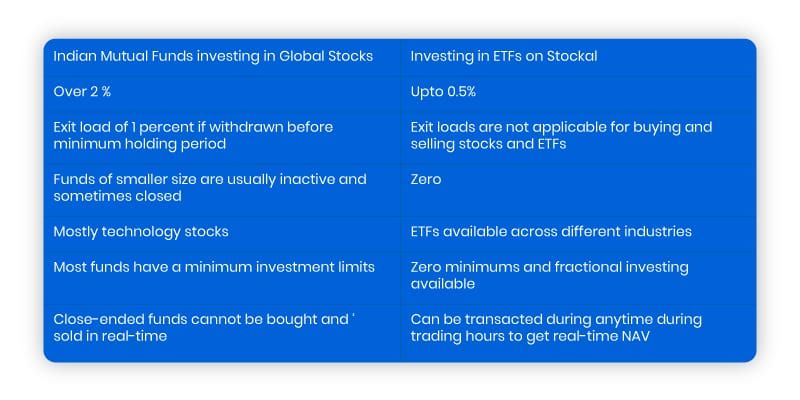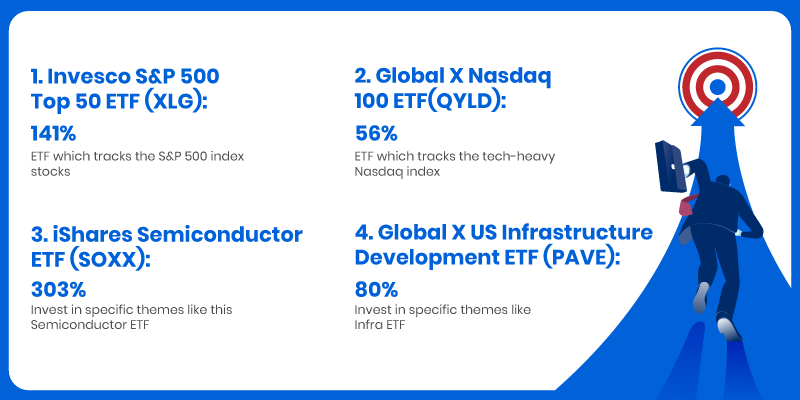Put all your eggs in one basket, said no one ever. The basket, in this case, is the domestic market. And by looking at trends in India, it is safe to say that nobody who wishes to accrue interest on investments is restricting their investments to the domestic market. Since it is highly unlikely that all currencies appreciate or depreciate at the same time, diversifying one’s portfolio is a smart move. The appetite for international investments is growing amongst Indian investors as old barriers are being brushed aside. This can be attributed to unrelenting disruption across sectors and an unprecedented pace of change due to a worldwide pandemic.
But, economic discussions cannot happen without assessing the situation in developed markets like the USA. After the financial crisis in 2008 and the COVID-19 pandemic, the Federal Reserve System followed a liberal monetary policy by pumping in a lot of liquidity into the market. Though this offered temporary relief from an immediate crisis, it has caused inflation concerns, which the FRS is trying to address by tightening the monetary policy with increased interest rates. A higher national debt at higher interest rates could be a long-term concern for the USA, according to financial experts.
Morgan Stanley’s research report indicates that in contrast to US equities, the European and Japanese stock markets are more reasonably priced and geared towards growth. With businesses reopening and improving returns on equity, Japan’s stock market is set to appreciate by 12 percent next year. Financial strategists believe that healthcare, financials, and secure tech companies could see an upside in the coming year.
The Average Assets Under Management (AAUM) of the Indian Mutual Fund Industry for the month of February 2022 stood at Rs. 38,56,140 crore.
The household preference for Mutual Funds over other avenues of investment has been on the rise since 2016. As investment in capital market instruments involves risks, and individual investors often lack expertise in portfolio construction, stock selection and market timing, mutual funds are ideal to pool money from a wide cross-section of investors and diversify the risk. These investments are actively managed by professional portfolio managers who undertake strategic transactions to take advantage of current or expected market conditions. In the process, mutual funds provide a steady flow of income and capital appreciation along with tax benefits to otherwise risk-averse investors.
Impact of latest developments
The recent industry level limit of $7 billion for Indian Asset Management Companies investing in overseas securities and mutual funds mean that Indian investors will not be able to make any fresh investments in Indian mutual funds investing in global stocks. The main reason for this is to enhance the quality of disclosure with respect to risk, performance, and the portfolio of the schemes. The new reforms will bring in some key changes to the existing system, which will affect both investors as well as brokers, making margin laws more stringent.
But, this doesn’t mean Indians cannot diversify their wealth portfolio by investing in international stock. One can still invest in the stocks of US companies directly through global investing platforms like Stockal, which help investors who wish to take their wealth portfolio global. Many people lack the advantage of knowledge about a particular company or wish to invest with no ‘maintenance’ amount and are looking for cost-effective options. So, if you’re not a pro or lack the expertise in picking the right stocks, ETFs are your best option.
How are ETFs different from Mutual Funds?
Exchange Traded Funds are a certain type of pooled investment security similar to mutual funds. These work exactly like mutual funds but are traded like stocks in the US stock exchanges with real-time pricing. For building a diverse portfolio, ETFs are great because their expense ratio is lower than mutual funds that are actively managed.

Take a look at some of the popular funds on Stockal’s platform for global investors looking to geographically diversify their portfolios.

Most of the ETFs have generated returns which have far exceeded the S&P 500 and Nasdaq Composite index returns for 2021. For a detailed understanding of the US Markets' performance in 2021, click here.
Ideal route for investors
The option of making investments in overseas markets directly through domestic platforms is still a viable one. Indian residents can remit up to $250,000 a year per person under the liberalised remittance scheme (LRS). Investing in stocks or ETFs available on the US exchanges is a good idea if one wants to invest directly in US stock markets. Since in the case of stocks, fractional investment is permitted in the USA, Indian investors can invest in highly priced stocks for as low as $1.
Another method of investing is Stacks — curated by asset managers, financial specialists, and investment experts. Global investing platforms like Stockal have a set of curated portfolios called Stacks which are developed by hedge funds, global asset management companies, experienced wealth management firms, and portfolio managers. You can pick the stack that best suits your investing pattern.
Benefits of Stockal Stacks
1. You can diversify your holdings in a single click, without going into deep research.
2. They’re built by investment experts based on extensive research and financial analysis.
3. Active quarterly rebalancing is done to ensure alignment with goals and benchmarks.
4. Each stack has a pre-assessed risk appetite based on the portfolio of stocks or ETFs that the Stack has to offer.
Popular Stacks
All of Stockal’s stacks are pre-configured and you can invest in them with a single click. Some of the popular stacks are:
1. US Tech Bluechip Portfolio
Pure Technology Internet companies that are critical to the industry and have leading competitive advantages (MOATs) in their businesses.
2. Electric Vehicle Portfolio
Composed of companies involved in Electric Vehicle (EVs) technology, autonomous vehicles, battery, EV components, and general cleantech companies. This Stack focuses solely on investing in EV companies with high growth potential and moderately-low risk.
3. Omniscience Supreme US
AIoT Stack sits at the heart of disruptive technology infrastructure (AI, IoT, Cloud, 5G, Big Data, Robotics, Analytics, Cybersecurity, etc) and their use cases (Industry 4.0, Autonomous Cars, Virtual Reality, Smart Wearables, etc).
Want to know more about Stockal’s curated stacks? Click here
Considering the latest change in rules and regulations, it is safe to say that there might be more in the coming future. To continue investing globally, the best way to go about is to opt for Stocks and Exchange Traded Funds as these do not attract exit loads and expense ratios.
Though the market may remain under pressure, global investment options are still a possibility for investors. International investing takes advantage of the potential for growth in emerging markets. When it comes to stock markets, volatility is a given, which means it’s better to not make all of one’s investments in a particular region. A wealth portfolio that’s globally diversified helps investors take advantage of market cycles in different countries and manage the risk associated with it. So when investing globally is simple and easy, why not start now?

